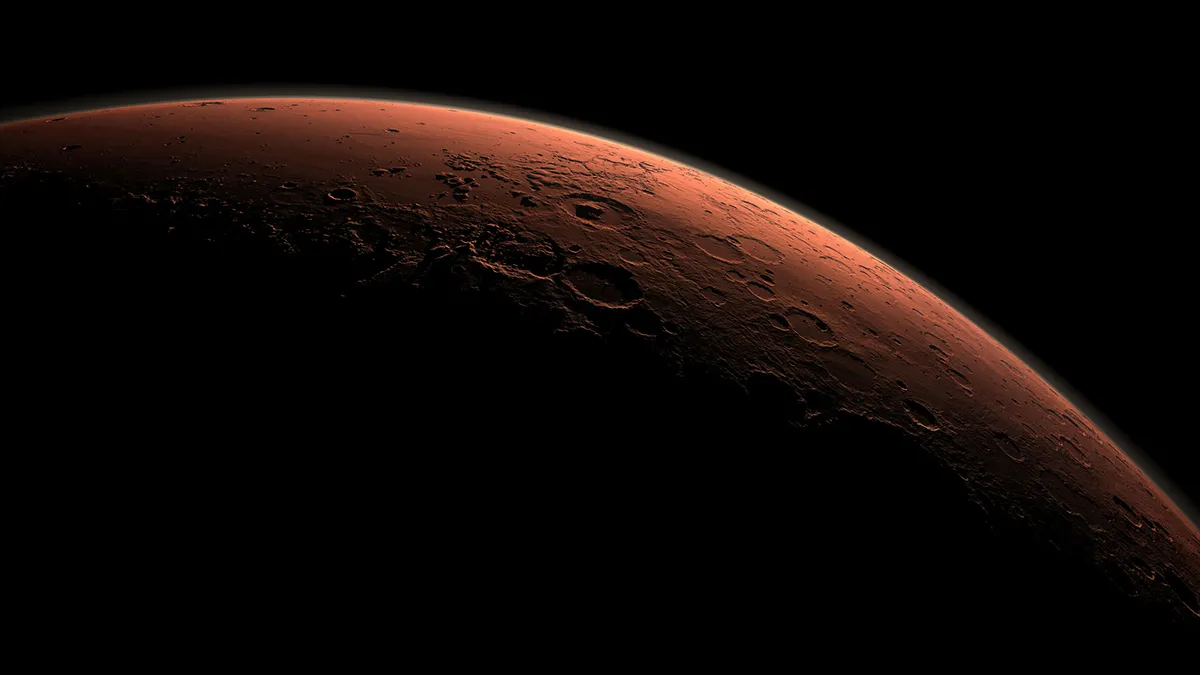Table of Contents
Too many of us are too obviously too desperate to just believe in the existence of extraterrestrial life, no matter how slender (indeed, non-existent) the evidence. Thus we get arrant nonsense like the “Drake Equation” being passed off as hard science — and a persistent determination to clutch at the slenderest threads as “proof”.
Every time, the “I want to believe” crowd are disappointed.
There was the “arsenic-based life-forms” paper, launched with great fanfare by NASA — and then quietly dropped when it was roundly debunked. Or the endless, breathless claims of “Earth-like planets” which have so far proved to be nothing like Earth at all.
But it’s Mars which has for centuries been the Great Red Hope for life-on-other-planets. So, when in the 90s a Martian meteorite discovered in Antarctic appeared to carry signs of ancient life, the media, even politicians, went into overdrive.
The four billion-year-old rock, found in Antarctica in 1984, made news across the world in 1996 after a group of NASA-led scientists claimed it contained tiny bacterium fossils.
According to Daily Mail, their claims led Clinton to call a televised news conference to discuss the discovery immediately. He described the discovery as one of the most amazing insights into our cosmos that science has ever unearthed.
But others were less convinced — and it appears that they were almost certainly right.
A new study obtained by Science Times debunks the 1996 claim made by Bill Clinton and other scientists that it could establish the origins of life on Mars.
According to “Organic Synthesis Associated With Serpentinization and Carbonation on Early Mars,” the apparent “serpentinization” of the rock occurred due to “aqueous alteration” of the stone under precise geological circumstances in early Martian geology. It was created by water, not aliens, to put it another way.
The “evidence” that Clinton and so many others pinned so much hope on was never more than threadbare at best. The sole basis for the claim was literally a microscopic thread of rock, which the enthusiasts claimed was the microfossil remnant of a Martian bacterium.
But then, a great many people swore that they saw a face on Mars, too. Bill was on it as quick as if it was an intern with her back turned.
Clinton hailed the findings on Allan Hills 84001 a “moment of discovery” and promised a special “space summit,” which is unusual for a sitting US president to remark directly on the publication of a new scientific study.
Not so fast, Slick Willy.
Researchers look[ed] at the Allan Hills 84001 martian meteorite (ALH 84001). To characterize the nature of water-rock interactions on early Mars, they performed nanoscale studies.
Mineral carbonation and serpentinization events on Mars resulted in globs of organic material within the rock, they discovered. When iron or magnesium-rich volcanic rocks come in contact with flowing water, serpentinization occurs.
This alters their mineral nature and causes the rock to generate hydrogen. Carbonization occurs when acidic water containing dissolved carbon dioxide reacts with rocks. Volcanic activity mixing with early Martian saline seas pouring over rocks caused this more than four billion years ago. Organic signs were left behind, which the current study team claims are proof of the salty water.
Remember, “organic” just means hydro-carbon-based. In other words, strictly ordinary geochemistry.
It’s just a rock.
Beyond the over-eagerness to find “evidence of life on other planets”, there was very earthly reason for the hype.
The president used the claims to justify increased financing for America’s space program. Scientists were suspicious about the NASA-led results and questioned the fanfare around the apparent discovery even at the time.
Science Times
With justification: it was all-too-obviously a case of what the great Richard Feynman called “Cargo Cult Science”: spinning scientific evidence in order to gain funding and/or political influence. “The first principle,” Feynman wrote. “Is that you must not fool yourself, and you are the easiest person to fool”.
The problem is that some people want to be fooled about the existence of extraterrestrial life so very, very badly*.
*I’ll confess that I, too, would dearly love to find proof of extraterrestrial life. But, like Houdini, wanting to believe is very different to being willingly suckered in by every crank and charlatan.









